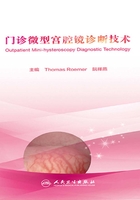
PREFACE
Being since 2011 Guest Professor and Honorary Director of the Beijing Obstetrics and Gynecology Hospital, Capital Medical University, Department of Gynecological Endocrinology, China, I have been searching all the time working in China where there could be special needs and which international cooperation projects would be reasonable. For example I helped to establish cooperation projects in the field of breast cancer research, I was engaged to establish 2011 the first official Menopause Clinic in China, 2012 the first Ovarian Cryobank and 2015 the first International Fertility Protection Center,and recently the International Interdisciplinary Endometriosis Center, certified by the European Endometriosis Society. For those projects my principle always was to bring the best experts to China. So today in the Department of Professor Ruan are Guest Professors from Germany, Italy, UK and Australia.This work to be a “Golden Bridge” for China has been acknowledged as I got several high awards, like the China Government Friendship Award and the Great Wall Award. Just recently I was invited to report within the Belt(Silk)Road Initiative, China’s perhaps most important project for international cooperation.
I am working together with Professor Xiangyan Ruan, who is internationally known as the medical director of the worldwide largest department of Gynecological Endocrinology. I realized that from the about 500 outpatients which she has every day in her department, 40% come with abnormal uterine bleedings and/or infertility problems. This percentage is much higher compared with our women in Germany. It seems that Asian women have more bleeding problems but less risk of venous thrombosis compared to Caucasian women. So I gave Professor Ruan the advice to invite Professor Roemer as Guest Professor in her department for establishing an “Outpatient Hysteroscopy Center” which to our knowledge is the first in mainland China. Professor Roemer certainly is one of the best experts in this field in Europe using this method of “mini-hysteroscopy”already many years routinely in his own hospital. He also has got a very broad education and experience for performing all types of gynecological surgeries -just recently a famous German journal(“Focus”)has highlighted him as one of the best surgeons in Germany. For performing “mini-hysteroscopy”,including getting histology, certain skills in this technique are important, which Prof. Roemer now on a regular basis is teaching in the Beijing Obstetrics and Gynecology Hospital. Together with Prof. Ruan, both are performing workshops on mini-hysteroscopy for physicians who come from various hospitals in China.Using the “mini-hysteroscopy”, within few minutes pathological problems like atypical endometrial hyperplasia, endometriosis, adenomyosis, polyps etc. can be seen without the need of anesthesia and without the need of a special surgery room. The minihysteroscopy method is not a competition and cannot replace the inpatient hysteroscopy, but within short time it can be decided during outpatient procedures if more invasive inpatient diagnostics and treatment should be performed, like if the patient need D & C or any inpatient surgical treatment. So the “Outpatient Minihysteroscopy Center”, established in 2015,certainly has got to be a great achievement for the Beijing Obstetrics and Gynecology Hospital, and we should thank the authors of this book, that they took their time to write this book. It can bring the great practical knowledge of two experts on a technique,which certainly has large importance especially also for China, since many Chinese gynecologists do have the problem for diagnosis and treatment of abnormal uterine bleedings and infertility problems.
Tuebingen/Germany and Beijing/China; June 2020
Prof.Dr.med.Dipl.Chem.Dr.rer.nat.
Alfred O. Mueck; MD.PharmD.PhD
Department of Women's Health, University Hospitals of
Tuebingen, Germany